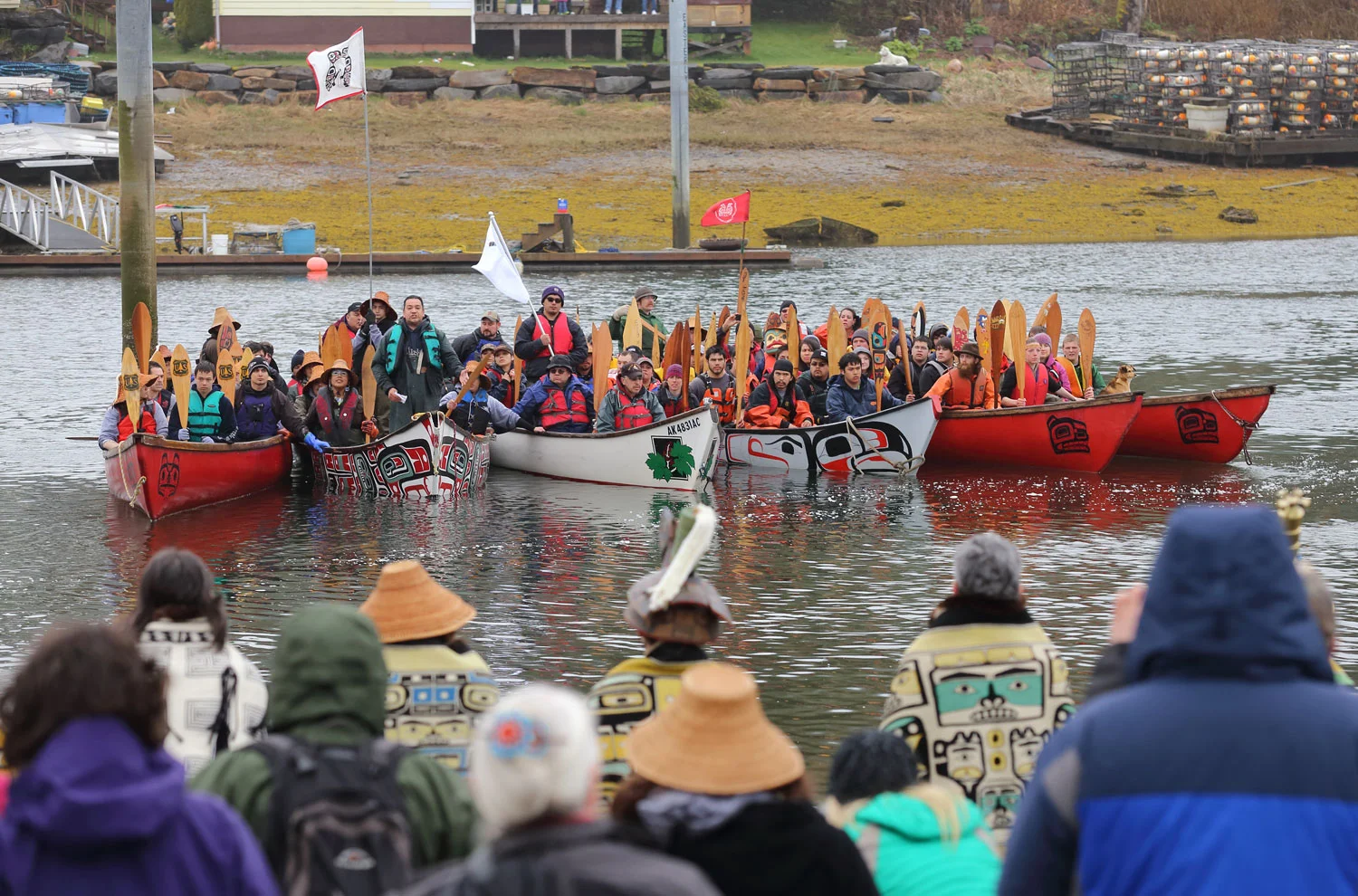Shakes Island Rededication
/
The Shakes Tribal House on Shakes Island in Wrangell, Alaska. The Three Frogs totem is to the right and there are three bald eagles in the cottonwood trees. The immature bald eagle is all brown so it is difficult to see.
The Shakes Island Tribal House, a central cultural point in Wrangell, has been rebuilt through the enormous efforts of many people. Seventy years of the Southeast Alaska rainforest environment had made the previous wood structure unsafe. The new building has been made with very careful attention to replicating the design and details of the historical house. Many great cedar beams and planks were adzed by two women and one man to give the building a beautiful and traditional texture.
The construction crew fitted the massive beams in a traditional manner and capped them with copper.

Architectural detail of Shakes Island Tribal House.
Master carvers studied old photos to closely reproduce the
original designs. The new building and carvings are amazing, and worth a
thoughtful look. Yes, you should stop in Wrangell soon, and arrange to see the Shakes Island Tribal House.
Last week the project manager and carvers in the Shakes Island Tribal House generously allowed me to come in and look around. They were working on the final details of the Bear screen for the front of the house.

Master Carver Steve Brown forms copper to the screen for the Shakes Tribal House.

The panels being lined up for final inspection and assembly.

Shakes Island Tribal House with the Bear screen installed.

House post inside the Shakes Tribal House
While finishing touches were in process, the planning for a great celebration was in high gear. More than one thousand visitors were expected in Wrangell, a town of just over two thousand residents. They came by plane, by the Alaska Marine Highway ferry system, on private boats, and by canoe.
rom the far reaches of this sprawling archipelago that is Southeast Alaska, people journeyed over the water in canoes to the Shakes Island Rededication. They had to make use of the safety boats traveling along with them when stormy weather threatened the canoes. One of the canoes that was being towed in rough seas broke loose and was lost for several days. No one was in the canoe when the tow line parted, and no one was injured.
The canoeists were part of the One People Canoe Society. Even if you are not interested in canoeing you can apply much of what this group is about by reading The Ten Rules of the Canoe at the link below. Click on the link and a new window opens. If that doesn't work then copy the link and paste it in your browser window.
Aren't those appropriate to life? I will be working on incorporating those into my daily existence.
On Friday, Wrangell people went to Reliance Dock to watch the canoes cross the last five miles to Wrangell. A cold breeze and strong currents slowed the progress of the canoes, and the paddlers had to work hard. As the canoes drew close Tlingit, Haida, and Tsimshian people started drumming and singing. The weary canoeists heard the drums across the water, giving them energy to finish their long paddle. And then, late in the drizzly, overcast day, they came into Wrangell Harbor, past the stone and cement breakwater.

With their handmade cedar paddles and traditional regalia blending with contemporary raingear and floatation vests, the paddlers saluted those singing and drumming them into the harbor.

Even the wee ones!

One People Canoe Society founder Doug Chilton including his child in this cultural event.
The canoes lined up in Inner Harbor, waiting, and asking
permission to come ashore on Shakes Island.
The spectacle and beauty is emotional in itself, but this is so much more. There is laughter and tears, fulfillment after so much preparation, a soaring love reaching out to relatives and friends in the canoes, and relief and joy at the freedom to express culture.
The Elders and clan leaders call to the canoes in Tlingit and English and, from the bow of the canoe, the call is answered. All of the canoeists pound their paddles onto the bottom of the canoe and the sound reverberates through the crowd on the island.

Canoes awaiting permission to land at Shakes Island.
Through the crowd you can get a little glimpse of the Elders and clan leaders in their regalia. They are wearing Chilkat blankets that are precious beyond currency. Symbolism in every garment tells many stories without a spoken word.
But this post is getting long.
Tomorrow I will post about the canoes coming ashore and there will be photos of he Elders in their Chilkat blankets and more.
In Awe and Wonderment,
Alaska Beachcomber
More about Native culture in Southeast Alaska: Canoes Landing at Shakes Island, Alaska Native Cedar Bark Hats, Details in a Small Totem Park
You might also check out: Food and Medicine from Nature

